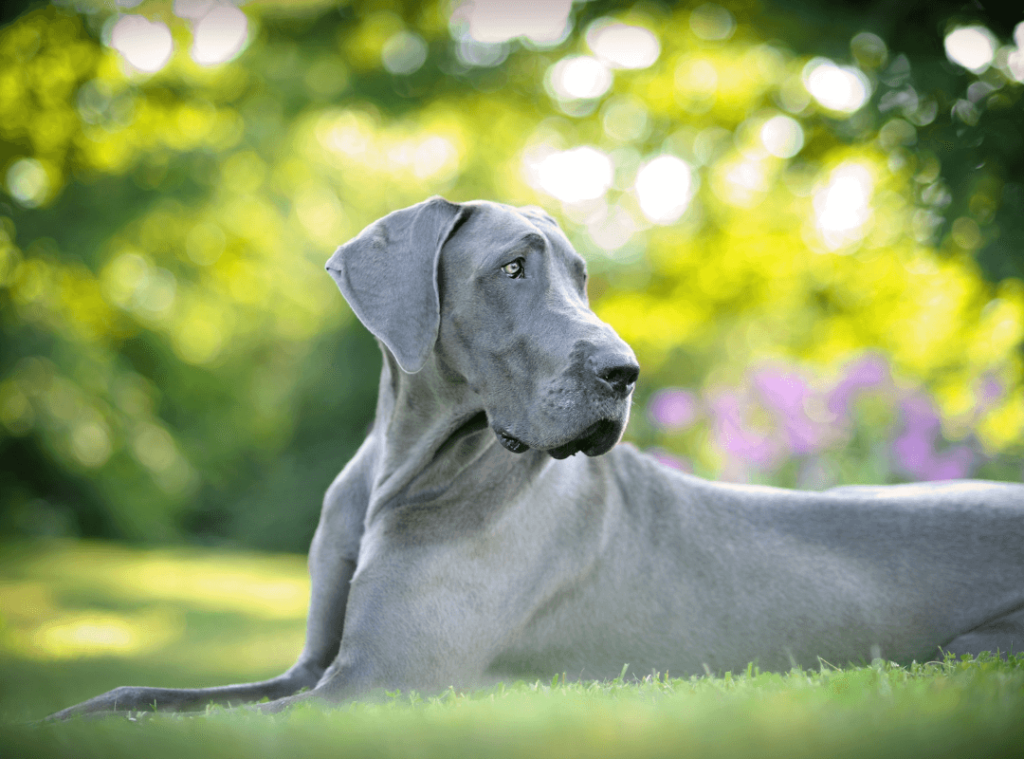I’ll just come out and say it. I would never use a front-clip harness on a Great Dane. This shouldn’t be a controversial opinion, but it really is!
Front-clip harnesses (such as the Pet Safe Easy Walk or 2 Hounds Freedom No-Pull Harness) are popular among dog owners and trainers who believe that because they are made of nylon, that they are a gentle and non-aversive tool.
However, I beg to differ. Not only is a front clip harness aversive, it’s potentially (ok highly likely) to cause damage, frustration, and pain to your dog.
Hear me out. If you use, or plan to use a front-clip harness, or have been told by a dog trainer that it’s humane (and that prong collars are bad), you’ll want to dig into this post.
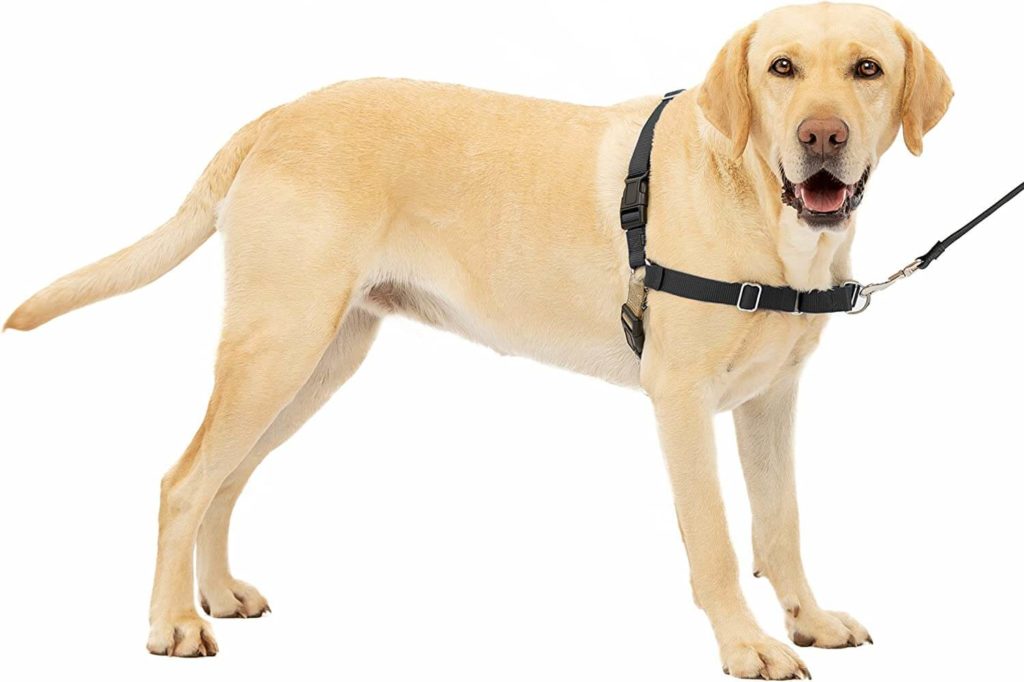
4 Reasons I Won’t Use a Front-Clip Harness on a Great Dane
I will cover these in more depth below, but here is the short version of why I think front clip harnesses are dangerous for dogs, especially for long-term use.
- They are easy to escape from
- It’s hard to get a proper fit on them
- They are inconsistent from a communication standpoint, which can lead to frustration
- They restrict the movement of the shoulders and can cause uneven strides, poor forward reach, and even limping
Because Great Danes have sensitive orthopedic needs, it’s important to avoid the use of training tools and devices that result in restrictions to natural movement.
Unfortunately, poor front angulation and incorrectly set front assemblies are something that plague Great Danes (we can thank the sheer volume of mediocre breeders for this). Dogs with an incorrectly placed shoulder and straight angles will struggle more with movement and reach than dogs whose genetic pedigree offered them better structure.
For those dogs with the flat front and cathedral style chest, the front-clip harness is adding insult to injury. (Read more about front-assembly in Danes HERE)
Below is an example of a Great Dane with a poor front assembly. Notice the ‘cathedral’ shape created where the chest and elbows meet. This happens because the shoulders are too far forward on the body. This dog also has poor angles in the shoulder, leading to that straight up and down appearance. Dogs with poor structure are built like stick figures, in other words.
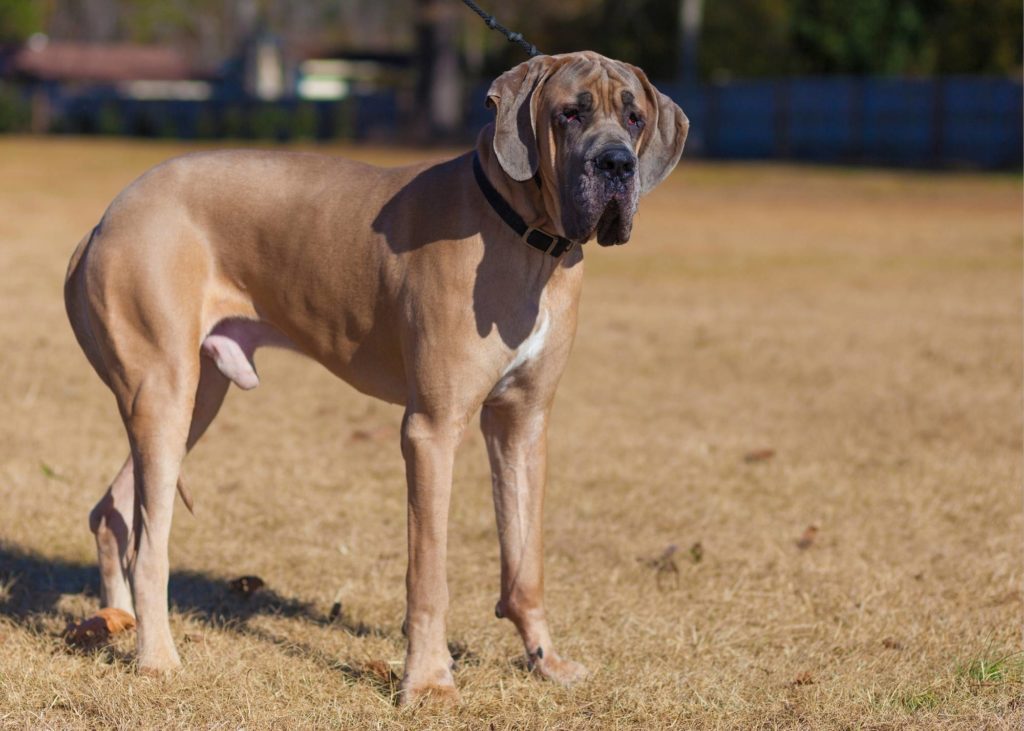
#1 Front Clip Harnesses are Easy to Escape From
A front-clip no-pull harness is designed in a “T” shape and it is very easy for a dog to pull backwards to escape from one. Because harnesses like this put a lot of pressure onto the chest and shoulders, some dogs may attempt to back out of them just to relieve the sensation.
Responsible Great Dane ownership means keeping our dogs under control at all times.
Not only is an escaped Great Dane dangerous to other dogs, people, and wildlife, they are a danger to themselves. If your Great Dane is not impeccably off-leash trained and likes to slip out of collars or harnesses, a T-shaped no-pull harness is the wrong choice.
Instead, choose a wide, flat fabric martingale collar (like this one), which is escape proof. This is the perfect solution for newly rescued dogs as well, who may be a flight risk.
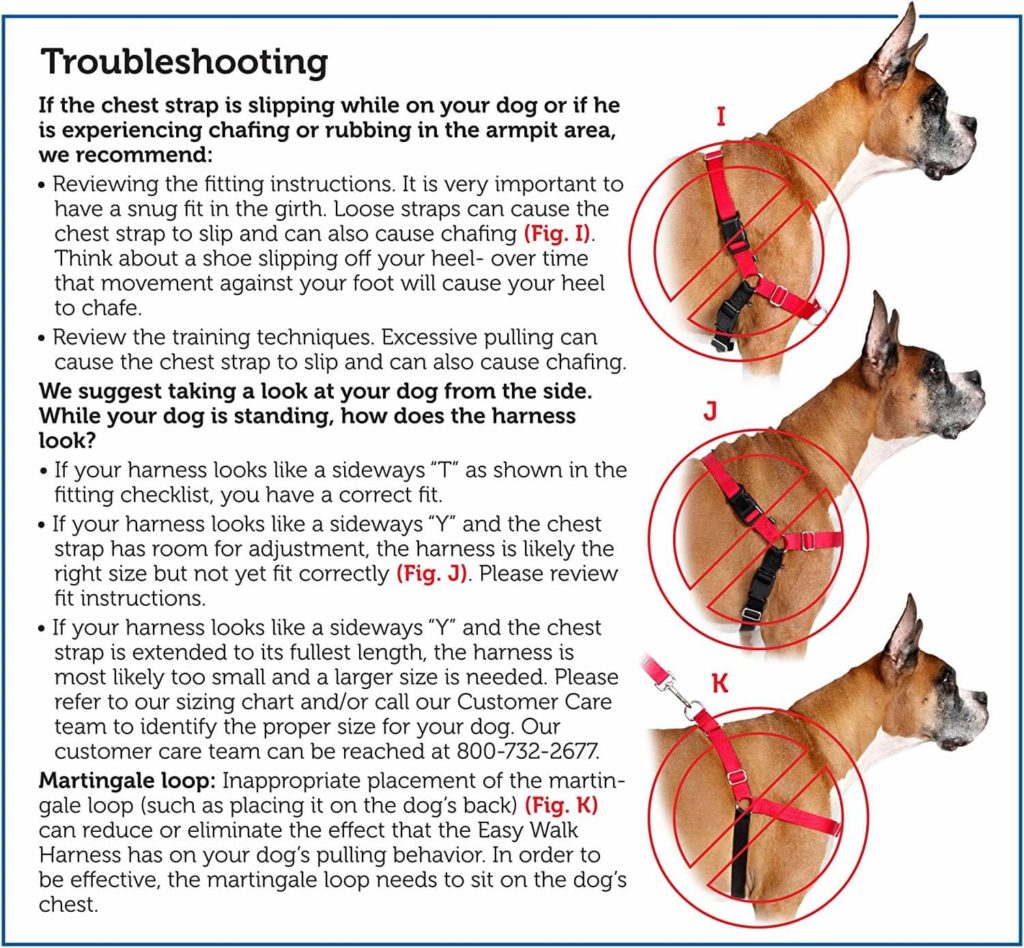
#2 It is Hard to Get a Good Fit On a Front-Clip Harness
T-shaped front clip harnesses are exceptionally difficult to fit correctly on a dog, especially on Great Danes who have massive chests.
The wrong fit will put even more unnecessary pressure on the shoulder assembly, and could also cause rubbing under the armpits.
Easy Walk even states that excessive pulling into the harness can change the fit and cause additional rubbing and chafing.
Note the addition of the martingale loop to the chest. This is part of the harness to add additional squeezing action when your dog pulls.
Squeezing the shoulders so the dog can no longer move forward is not as ‘gentle’ of a technique as these tools are marketed to be.
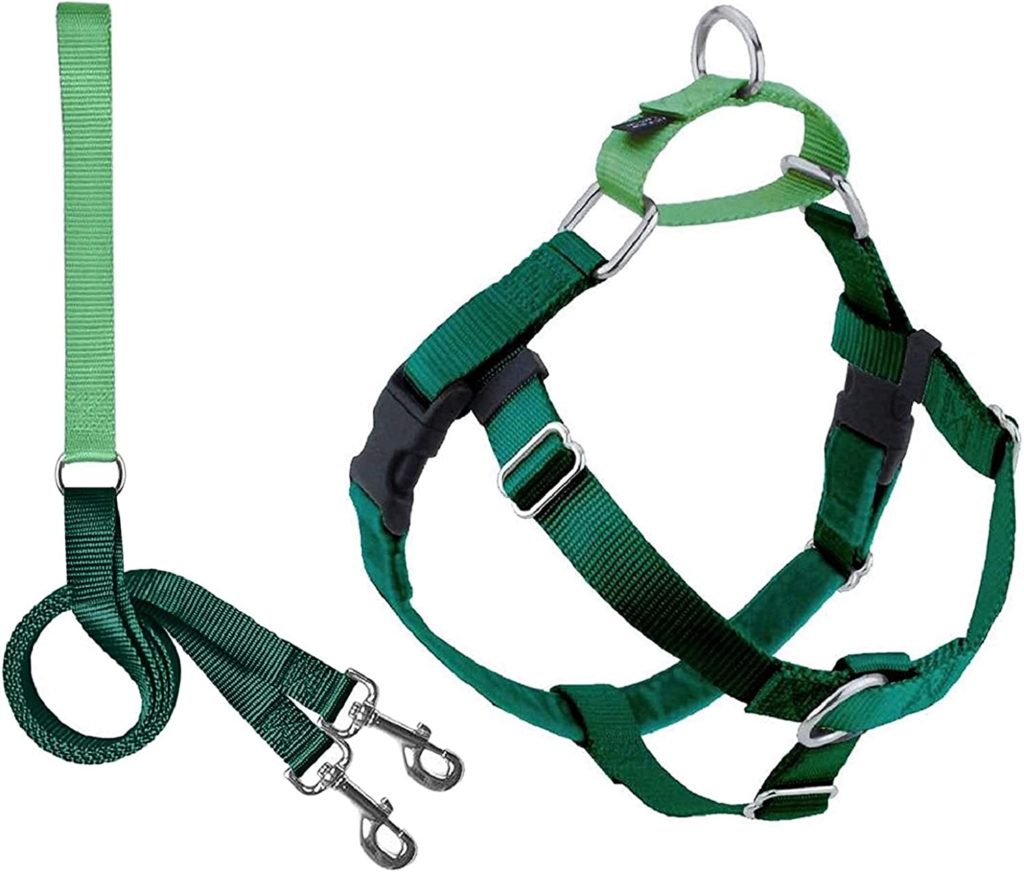
#3 Front Clip Harnesses Provide Inconsistent Communication
The 2 Hounds Freedom no-pull harness is built to be used with a double leash system where a leash is clipped to both the front and the back of the harness. It also has the martingale loop to provide squeezing action.
Keep in mind that two connection points doubles the tactile input from the leash. In this case, the dog will feel pressure into their back, chest, or both.
Even if only one leash clip is used, the communication will be inconsistent.
When a dog is learning how not to pull on the leash, it’s important to use a combination of YES and NO to communicate.
When a no-pull harness says “NO” by applying pressure to the chest or tightening the strap around their shoulders, the dog should in theory understand that pulling = bad and not pulling = good.
The problem is that this pressure is incredibly inconsistent. Even taking a step forward and not pulling into the harness can result in an incorrect communication of “NO” that is frustrating and confusing to your dog.
Super sensitive dogs will respond to a harness like this by not pulling, ever. They may even move slowly and appear ‘under control’. Their body language may be subdued and docile.
Some people mistake this as ‘calm’, when truthfully it’s a form of behavior suppression.
I’ve even seen some dog trainers say that a harness like this is ‘calming’ and makes the dog feel secure. I personally believe this is a massive misunderstanding of how the dog actually feels.
Less sensitive dogs may respond by adding pressure; they will pull into the harness to try and relieve the sensation. The harness will then force their body to the side. Because the pressure of YES and NO is not super clear in a harness like this, even with dedicated training to teach it, a dog may never quite understand what the end goal is.

#4 Front Clip Harnesses Work By Suppressing Natural Movement
Do an experiment.
Watch the people in your neighborhood walk their dogs. Look for the dogs that are on front-clip harnesses.
Do they look comfortable? Happy?
Is the harness keeping the dog from pulling, or does the dog pull into the harness while the loop tightens up around their shoulder?
Are they able to reach forward and take natural steps, or do they appear to be limping, walking slowly, or taking small steps instead of large strides?
When you start to really observe, you’ll notice that many of the dogs in front-clip harnesses tend to look either uncomfortable, or they are pulling anyways.
A no-pull harness is built with a strap across the chest that is meant to tighten and apply pressure when they pull forward into it. With enough pulling and pressure added, the dog will eventually also be forced to the side.
As Great Dane owners and advocates, we believe that this type of training tool is unfair to Great Danes and potentially damaging to their orthopedic health, especially when used long term.
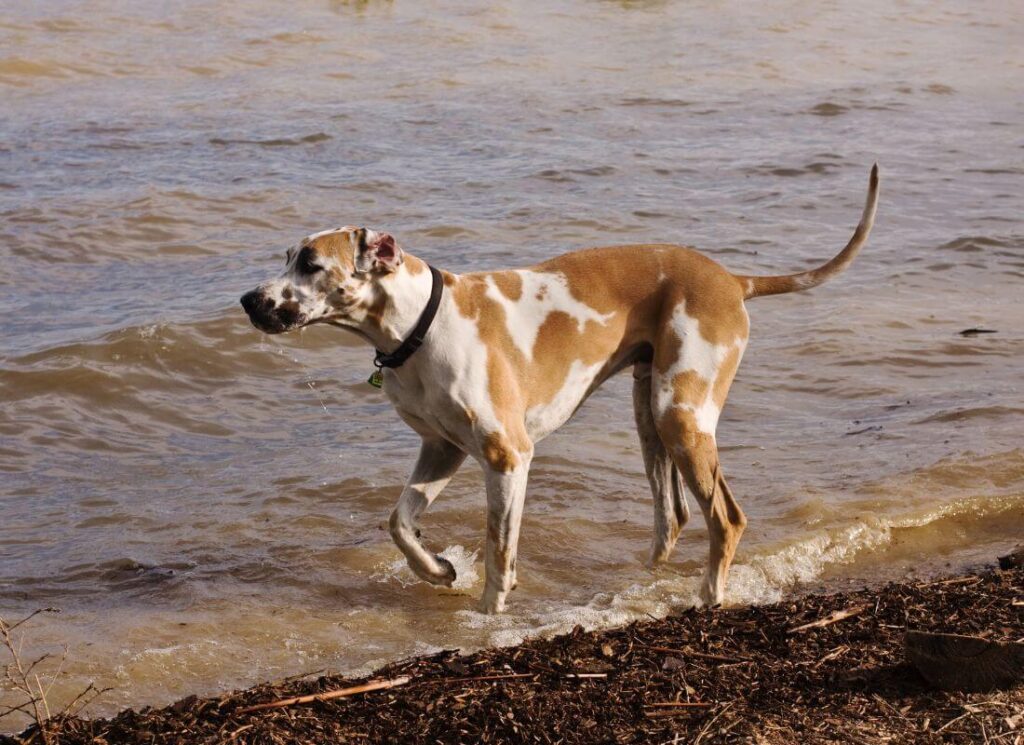
Should I Use a No-Pull Harness on My Great Dane?
This is up to you.
For short term use (while in training), a front clip harness may provide you with just enough leverage to reinforce the correct behavior.
We would not recommend long term use of a no pull harness on Great Danes.
If you do want to try a harness with a front clip option, choose a well-built harness with a Y-front on it, like the Ruffwear Front Range. This won’t restrict movement, but if your dog tries to lunge or pull it will pull them to the side (and give you a little more control).
It’s important to keep in mind, however, that Great Danes are giant breed dogs. If they pull into a nylon training tool like this, it’s not likely to stop them from dangerous behaviors such as running, lunging, or jumping while on a leash. An untrained Dane in a harness is a dangerous animal.
There are two training tools that we do recommend for Great Danes. When used correctly, both tools are humane, gentle, and don’t rely on restrictions to movement.
An E-Collar can be used at very low, positive levels to establish off-leash reliability. Read more about this HERE. Well trained off-leash dogs cannot injure themselves or others by pulling or lunging. The skills taught in a positive off-leash training program translate beautifully to the use of a slip lead or martingale collar when needed.
A prong collar uses even pressure (not poking or stabbing) and makes YES and NO communications very clear for dogs that have been taught how to turn the pressure off. Unlikes a nylon harness, the shoulders are free to move naturally.
Note in the illustration below, from the Great Dane Club of America written standard for Great Danes, how the front arms reach out, extending as far as the nose can reach.
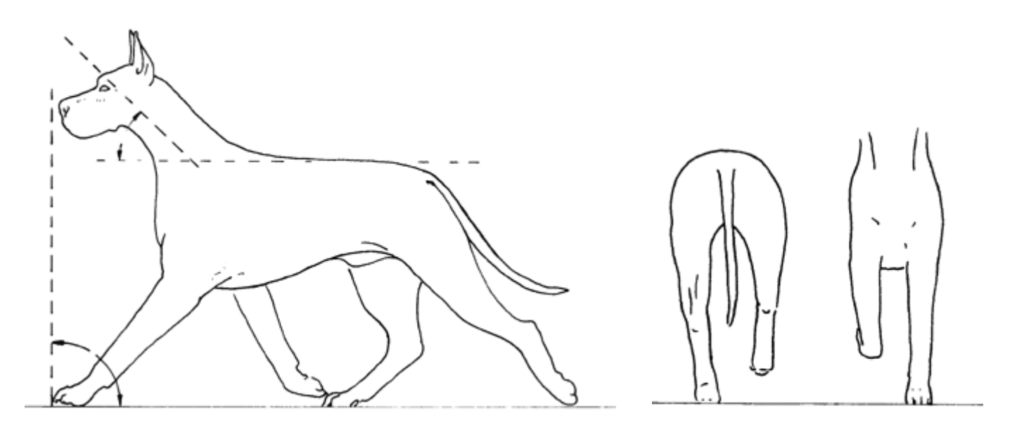
How Do I Train My Great Dane Not to Pull?
Of course, pulling behavior is frustrating and dangerous!
A Dane pulling into a non-restrictive front clip harness (like the one mentioned above) is a MUCH better alternative to a Dane pulling into a flat collar.
However, there are better ways overall.
The biggest leash mistake dog owners make is not realizing that in order to stop pulling, the dog must be taught what to do instead.
My advice?
- Stop looking to “no-pull” tools to magically solve your pulling problem
- Start instead, off-leash, in your living room. Use high value treats to reward the behavior of looking at you, walking next to you, engaging with you, and coming when called
- With time, you can clip on a leash (to a collar) and continue practicing the behaviors of “Heel” and “With Me”. Additionally, you can phase out the rewards and just use praise, too!
- Once your dog has a solid understanding of walking near you, layer in the prong collar.
- Teach your dog how to respond to gentle prong pressure by turning towards you.
You can purchase a Herm Sprenger prong training collar HERE.
Here is a phenomenal video on how to properly and positively introduce a prong collar. Special thanks to Argos Dog Training for this fantastic content (please LIKE and FOLLOW this trainer!):

